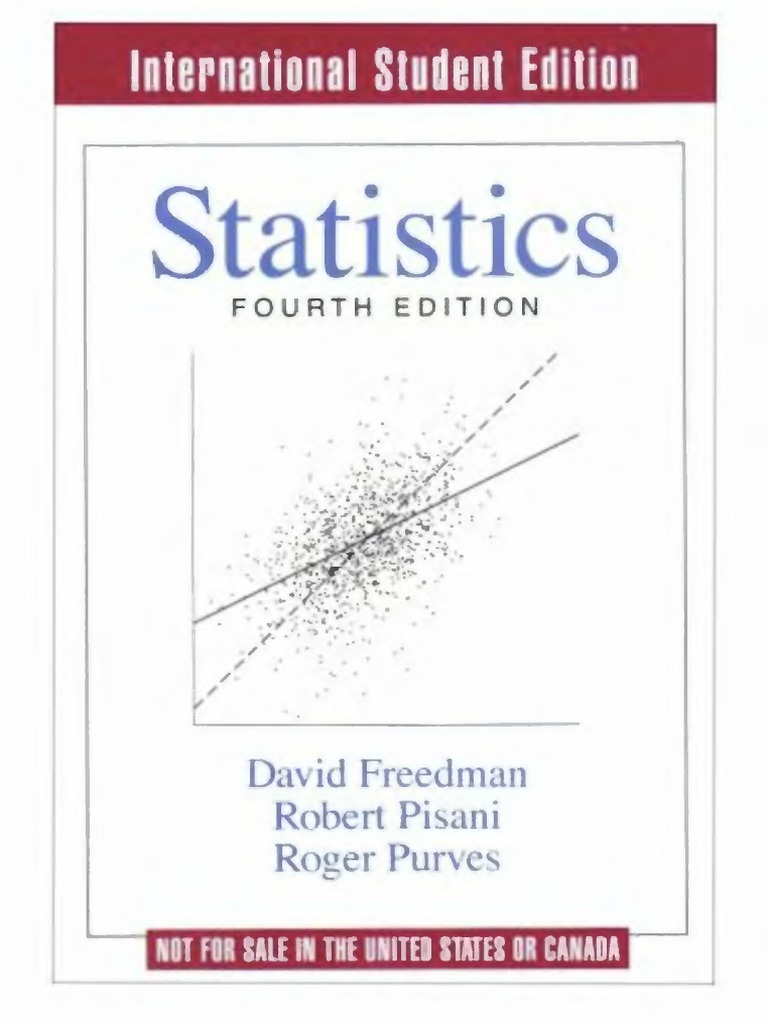Statistics Freedman 4th Edition Pdf Download
I was a student of David Freedman’s and I am now a professor in Biostatistics and Statistics at Berkeley. Speaking at David Freedman’s memorial is at once one of the hardest and easiest things I have had to do. Hardest, because I miss David dearly and because I remember him as a very private and reserved person.
The chart above illustrates how world population has changed throughout history. At the dawn of agriculture, about 8000 B.C., the population of the world was approximately 5 million. Over the 8,000-year period up to 1 A.D.
It grew to 200 million (some estimate 300 million or even 600, suggesting how imprecise population estimates of early historical periods can be), with a growth rate of under 0.05% per year. A tremendous change occurred with the industrial revolution: whereas it had taken all of human history until around 1800 for world population to reach one billion, the second billion was achieved in only 130 years (1930), the third billion in 30 years (1960), the fourth billion in 15 years (1974), and the fifth billion in only 13 years (1987). • During the 20th century alone, the population in the world has grown from 1.65 billion to 6 billion. • In 1970, there were roughly half as many people in the world as there are now. • Because of declining, it will now take over 200 years to double again. Wonder how big was the world's population when you were born?

Check out this or this one to find out. Population in the world is currently (2018-2019) growing at a rate of around 1.07% per year (down from 1.09% in 2018, 1.12% in 2017 and 1.14% in 2016). The current average population increase is estimated at 82 million people per year. Annual growth rate reached its peak in the late 1960s, when it was at around 2%. The rate of increase has nearly halved since then, and will continue to decline in the coming years.
It is estimated to reach 1% by 2023, less than 0.5% by 2052, and 0.25% in 2076 (a yearly addition of 27 million people to a population of 10.7 billion). In 2100, it should be only 0.09%, or an addition of only 10 million people to a total population of 11.2 billion.

World population will therefore continue to grow in the 21st century, but at a much slower rate compared to the recent past. World population has doubled (100% increase) in 40 years from 1959 (3 billion) to 1999 (6 billion). It is now estimated that it will take another nearly 40 years to increase by another 50% to become 9 billion by 2037.
The latest indicate that world population will reach 10 billion persons in the year 2055 and 11 billion in the year 2088. Year (July 1) Population Yearly% Change Yearly Change Median Age Fertility Rate Density (P/Km²) Urban Pop% Urban Population 2020 7,795,482,309 1.09% 82,494,698 31 2.47 52 55.6% 4,338,014,924 2025 8,185,613,757 0.98% 78,026,290 32 2.43 55 57.5% 4,705,773,576 2030 8,551,198,644 0.88% 73,116,977 33 2.39 57 59.2% 5,058,158,460 2035 8,892,701,940 0.79% 68,300,659 34 2.35 60 60.7% 5,394,234,712 2040 9,210,337,004 0.70% 63,527,013 35 2.31 62 62.1% 5,715,413,029 2045 9,504,209,572 0.63% 58,774,514 35 2.27 64 63.5% 6,030,924,065 2050 9,771,822,753 0.56% 53,522,636 36 2.24 66 64.9% 6,338,611,492. Sherlar uz. 10 Billion (2055) The United Nations projects world population to reach 10 billion in the year 2056. 8 Billion (2023) World population is expected to reach 8 billion people in 2023 according to the United Nations (in 2026 according to the U.S. Census Bureau). 7.7 Billion (2019) The current world population is 7.7 billion as of March 2019 [] according to the most recent United Nations estimates elaborated by Worldometers.